Pre-World War II air doctrine, both in the US and Britain, called for employing a strategic major bombing campaign against an enemy’s industrial centers. It was a “faith-based” theory, unsupported by hard evidence. Because strategic bombing had been seldom conducted before 1939, things did not work out as planned. For airmen, their weapon’s newness meant surprises were frequent.
How did air commanders cope
First, they realized that some of the most basic questions regarding tactics, procedures, and cause and effect still begged answers.
How do you, for example, disrupt a rail transportation system, or what size and type of bombs are most suitable for putting an oil refinery out of commission? What is the ideal bomber formation to maximize accuracy while also minimizing exposure to enemy defenses
These types of questions had never really been asked before, for the simple reason that the air weapon did not exist to strike such targets. To address these unique questions required a new discipline, Operations Research. Essentially, OR was the use of scientific and mathematical methods to study military operations with the intent of making them more efficient and effective.
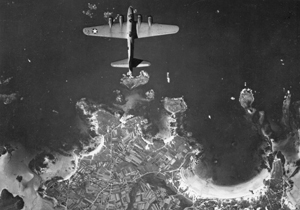 |
A B-17 with the 359th Bomb Squadron seen from above. |
The concept of OR was first tested in World War I when British scientists were called in by the Admiralty to help devise a solution to the German submarine menace. After the war, however, this discipline was largely forgotten. The scientists returned to their private and academic pursuits, and military officers were busy with other matters.
World War II quickly identified the need for such methods once again.
The Royal Air Force began attaching scientists and other specialists to its principal operational commands in 1940, and by the autumn of 1941, they had been organized into OR sections, each responsible to the unit’s commander. The leading members of these sections were scientists and engineers, while the rest of the staff consisted of personnel trained to “think numerically.”
The problems studied by the OR sections were largely tactical or technical—such as the most effective use of aerial photography, camouflage, aerial mines, searchlights, radio, radar, etc.
Perhaps more importantly, they also began studying the effectiveness of strategic bombing. Specifically, Operations Research attempted to answer the question of what happened to RAF bombers over Germany, and then to suggest methods to improve accuracy and effectiveness while also lowering the risk to aircrews.
In 1941, RAF’s Bomber Command had a difficult time even locating cities at night; bombing difficulties led to radar and radio aids such as Gee, Oboe, and H2S. Operations Research would test, evaluate, and refine these navigation and targeting technologies.
These aids became increasingly effective: In early 1942, less than 25 percent of bombs landed within three miles of the target. By the end of the war, that number had climbed to 95 percent—with 50 percent hitting within a mile or so of the aimpoint.
Bomber Command’s night bombers did not fly in a large formation to the target as did US bombers. Rather, they proceeded individually to the target area in a long trail, usually stretching over a hundred miles. Operations Research showed that, contrary to the belief of the aircrews, concentration of the bomber stream over the target should be increased.
The scientists calculated that the odds of a midair collision were extremely small, not more than one per hour, and the odds of being struck by the bombs of an aircraft above were negligible. Presumably, this estimate allayed the fears of the aircrews, and so the concentration of aircraft in the bomber stream was gradually increased from under 10 aircraft per minute to 30 per minute over the target area.
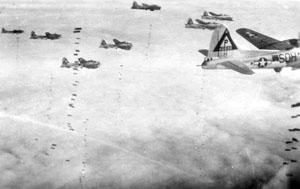 |
B-17s with the 547th Bomb Squadron drop their weapons on a mission during World War II.
|
Determine the Accuracy
Similarly, OR determined that evasive action over the target itself was “meaningless.” Although rapid heading and altitude changes may have made aircrews feel better, they did nothing to lower their chances of being hit. Worse, maneuvers increased the odds of a collision while decreasing accuracy.
If the resultant accuracy was so poor as to require a restrike, then the risk to aircrews actually increased through “evasive action.” In short, crews were told to stiffen their upper lips, fly straight and level, and put their bombs on target as the best ways to ensure their continued survival.
Operations analysts on the American side borrowed heavily from their British counterparts. In September 1942, Maj. Gen. Ira C. Eaker, who became commander of Eighth Air Force, set up an OR section for studying bombing accuracy and loss rates.
About the same time, Gen. Henry H. “Hap” Arnold, commander of the Army Air Forces, established in Washington the Committee of Operations Analysts (COA) composed of mathematicians, lawyers, physicists, engineers, and even one architect.
The types of problems examined by the committee and its detachment at Eighth Air Force were similar to those studied by the OR sections at Bomber Command. Their first task was to determine the accuracy of the American bombers and then suggest ways to improve it.
Using cameras that automatically took photos during bomb runs, they found that, not surprisingly, the better the weather, the better the accuracy. Electronic bombing aids were therefore essential because the weather over Germany was usually miserable. Regardless of the radio or radar aids employed, bombing through weather never matched visual bombing for accuracy. By October 1944, 41.5 percent of Eighth Air Force’s visually aimed bombs fell within 1,000 feet of the aimpoint. Using only radio or radar aids, accuracy plummeted to a miserable five percent.
As in Bomber Command, the operations analysts tackled many specific problems, including range extension, tactical formations, bomb weights and fuses, the utility of incendiary bombs, and the optimal strike mission size.
A typical problem involved determining the relative threat from enemy fighter airplanes versus anti-aircraft artillery. After extensive interviews with crew members, especially those who had been shot down and lived to tell of it, operations analysts discovered that stragglers had it the worst. When a bomber fell out of formation, it was almost immediately pounced on by a half-dozen enemy fighters. A bomber usually fell out of formation, however, because it had been hit by AAA. Specifically, hits to an engine started fires that caused an aircraft to lose power, drop out of formation, and become a straggler.
The solution: Put armor around the vulnerable engines to reduce AAA damage, which would in turn reduce the number of stragglers and losses to enemy fighters.
Another problem considered by the analysts involved accuracy. After studying countless poststrike photographs, analysts determined, contrary to procedures and popular belief, that bombing accuracy would be greatly enhanced if an entire group released its bombs when the leader did—rather than if every bombardier chose his own drop point.
Such technical problems had not been entirely ignored before the war, but many assertions were later proved absurd. In 1938, for example, one school’s bombardment text stated that 100-pound demolition bombs were “particularly efficacious against the average factory or warehouse.” Such small bombs proved useless in combat.
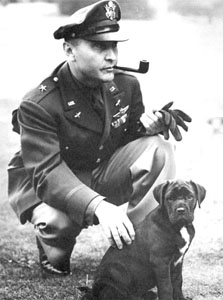 |
Gen. Ira Eaker (shown here as a brigadier general) called for the creation of the Enemy Objectives Unit, which was tasked with providing detailed analysis of designated targets.
|
It was precisely because of such muddled thinking that OR was so essential to the success of the strategic bombing campaign. Top Allied air commanders recognized this and gave the scientists their full support, but also faced other problems. Theories and doctrine assumed that strategic bombing against the industrial infrastructure of an enemy would have decisive results: It would sap and eventually break both the will and capability of the enemy to resist. This was an article of faith, not science.
Research gave commanders and planners guidance on how best to destroy specific elements of enemy infrastructure, but the broader question remained: What effect did destroying an oil refinery or railroad marshaling yard have on the overall goal of winning the war or breaking the enemy’s will and capability
In short, because you knew how to destroy a factory did not necessarily mean you should destroy it. Operations Research told air commanders how to hit the target correctly; they now needed to hit the correct target.
Intelligence Gathering
To address this problem, air leaders had to move analysis to a higher level of abstraction. Airmen realized that they had not developed a clear understanding of what made an economy work. After all, strategic bombing, like a naval campaign of blockade and surface raiding, is at base a form of economic warfare. But if you aren’t sure how an economy functions properly, how can you know what makes it fail
The officers at the Tactical School recognized this problem and made the first rudimentary attempts to study the workings of a modern industrialized nation during the 1930s. The War Department forbade the gathering of intelligence on foreign economies, however, so in 1936, students and instructors studied the industrial infrastructure of the northeast United States. Their investigations led them to conclude that 100 well-placed bombs could shut down 75 percent of the region’s electrical generating capacity. Other targets to be struck included rail lines, fuel storage depots, steel plants, and food distribution and preservation facilities. The result of these attacks would be paralysis.
This sounded promising—although it proved overly optimistic in practice—so at the start of the war, air planners called in industrialists to study the German economy. They also went to New York City financial institutions that had heavily invested in Germany before the war. These banks had blueprints of factories, production schedules, and other crucial data on the German economy.
Using this information, intelligence provided by the British, and knowledge of American industry, planners projected what specific systems were most important and also most vulnerable.
Even more important were the questions that arose after obtaining basic economic and industrial data. If you were able to neutralize a portion of a country’s rail network, what effect would that produce on the enemy’s economy as a whole? In short, air commanders and planners were vitally interested in determining the effects of their bombing campaign.
How did airmen address this problem? They hired or drafted hundreds of men and women to serve as intelligence gatherers and analysts from business, financial, scientific, engineering, and legal backgrounds.
It was a slow process. As late as 1939, there were only 22 people in the Army’s entire G-2 intelligence division. Although G-2 expanded rapidly, virtually none of the hundreds of new people hired had any experience in intelligence gathering or analysis.
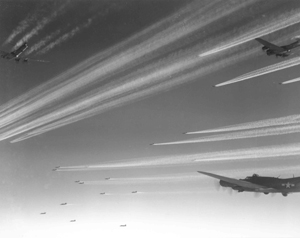 |
A large formation of B-17s streaks across the sky. Operations Research added science to the art of bombing.
|
Fortunately, much help came from the British. Britain’s Ministry of Economic Warfare was established early in the war with an intelligence division that collated and interpreted economic information. When the US entered the war and Eighth Air Force began deploying into British air bases in 1942, Eaker called for a similar advisory body. The result was the Enemy Objectives Unit, attached directly to Eighth Air Force headquarters, composed of civilian economists and lawyers. Their job was to provide detailed analysis of designated targets, to include the importance of a particular plant within an industry, the vulnerability of those plants, and the time necessary for recovery after an air attack.
For this last function, the British established a section, termed RE8, which focused almost exclusively on bomb damage assessment. By mid-1943, Americans joined RE8, which then provided detailed BDA to both Bomber Command and Eighth Air Force. Given the difficulty of measuring damage from photographs taken at high altitude, combined with deliberate German attempts to hide and mislead Allied analysts, it soon became apparent that BDA, then as now, was as much an art as a science.
Despite all of these efforts, basic questions regarding strategic bombing remained either unanswered or in dispute. In early 1944, for example, Normandy invasion planners pondered how best to employ heavy bombers to support the landings.
Rail vs. Oil
The British, based on the results of the bombing campaign in Italy, concluded that a concentrated air campaign against the German railroad network in northern France would be most effective.
The Americans, backed by the analysis of their Enemy Objectives Unit, argued for a campaign against German oil. In this view, destruction of the oil refineries and storage facilities would bring the entire German war machine to a halt. This “rail plan versus oil plan” controversy raged on for several weeks until the supreme commander, Gen. Dwight D. Eisenhower, opted for the rail plan in March 1944 because it seemed to offer more immediate results and speed was imperative.
What is interesting about this controversy is that the two most capable and informed agencies tasked to examine the German war economy looked at the same data and came up with totally different conclusions.
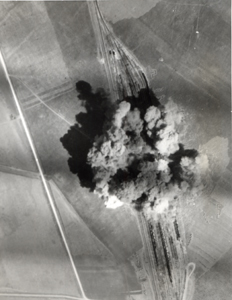 |
A large billowing cloud of smoke obscures the view of the railyards at Munich, Germany, after B-17s pummeled that area in September 1944.
|
The controversy over targeting seems never ending, and is illustrative. One historian has since argued that based on his extensive review of German railroad records, he is convinced that coal was the key commodity in the German economy, and since it was almost exclusively transported by rail, the transportation plan was the road to victory—albeit not for the reasons posited by rail plan advocates at the time. On the other hand, an author of the official history of British intelligence in the war maintained that his extensive study of German signals intercepted during the war had convinced him that oil was the key target set after all. Maj. Gen. Haywood S. Hansell Jr., one of the key planners of the American bombing campaign, argued in his memoirs that it was not oil, coal, or railroads, but electricity that should have been given top priority. And so it goes.
Air commanders were dependent on intelligence, but the state of that art in World War II made it difficult to have even a reasonable confidence that the chosen targeting strategy was correct. Small wonder that specific target sets moved up or down the priority list with little explanation. Confused commanders were forced to use their intuition, their limited experience, Operations Research, and intelligence analyses.
Regardless, the US and British air doctrines prior to World War II were clearly flawed. Bomber operations over occupied Europe demanded new organizations, new techniques, and new ideas so Operations Research and a unique strain of air-based intelligence grew and evolved to answer these fundamental needs.
The results were dramatic. By early 1945, the German economy was a shambles, and Japan’s would soon be as well.